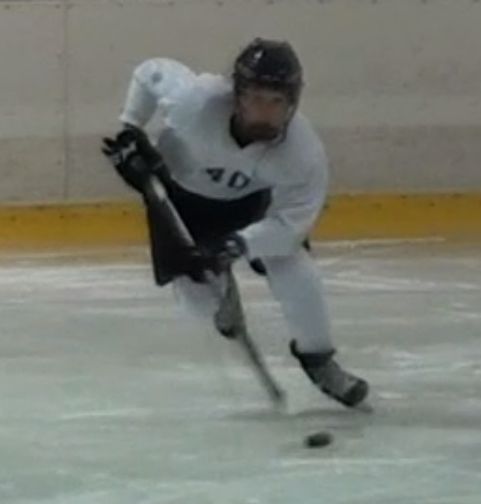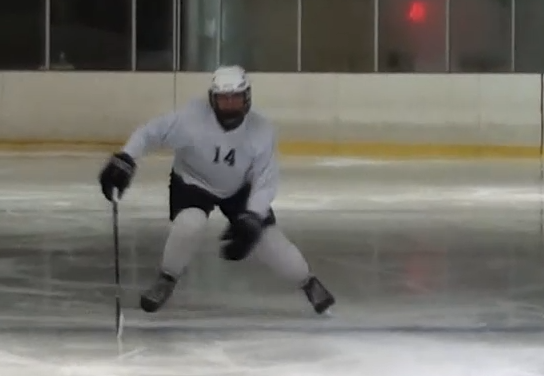About Us
About Youthhockeytraining.com
Who We Are
Youthhockeytraining.com is the leading online source of valuable information for every hockey parent in search of knowledge that will unlock their child’s ability to reach their maximum potential. Our company is a collaboration of individuals with a thirst for knowledge. It’s our mission to provide our audience with truthful information backed by testimony and scientific evidence.
What We Believe
In hockey, hustle beats skill if skill doesn’t hustle. Let’s be perfectly clear, if you do not have the training for proper technique you will never reach your full potential. There are literally thousands of hockey players playing at every level with poor skating, stickhandling, and shooting technique. And let’s face it, team practices and large clinics aren’t getting it done. Time and time again, parents have expressed their frustration because they are spending thousands of dollars for hours of training only to see minimal results. The problem is that no one has challenged the status quo or developed ideas that truly address what young hockey players need to improve or reach the highest levels of competition.
The Hockey Manifesto
What a player truly needs to develop to reach his/her full potential.
- Speed Endurance
Defined as the physical capability to maintain skating effort for 45 seconds, shift after shift, with a rest interval of no more than 90 seconds. This is at optimal rates of speed and quickness.
A hockey player must be in tremendous shape, not compared to the average athlete, but compared to other elite athletes. Without being in the best cardio/anaerobic shape possible, a player will never allow his skill to come out in a game. This particular sport is just too physically demanding.
For a player to get into superior “game” shape, he/she must train correctly. Therefore, a player must engage in a minimum of 2-3 explosive anaerobic driven interval training sessions per week during the off season. A player must be totally prepared for the 15-21 shifts during a game. If a player is not in extraordinary shape, he cannot maintain a speed throughout the entire shift/game to ever be truly successful at the highest level. Sports like football and baseball require speed, hockey requires speed endurance.
- Technical Skating
Defined as a player’s ability to perform skating skills/elements in a superior manner than his/her competitors. This higher-level technique allows a player to maneuver around the ice in such a way that he/she can perform any skill required to be successful at the highest level of competition.
Although a player can master advanced edgework, it is the ability to execute fundamental skills with power, speed, and quickness which will have the greatest impact on athletic performance in a competitive environment.
Forward stride, tight turns, transitions, shuffle stride, crossovers, quick starts and stops, and backwards skating are all fundamental skills that need to be technically perfected to retain energy reserves and allow a player to compete at the highest level. For a player to totally become comfortable on his/her skates and learn all necessary skating elements to excel, he/she must focus on technical skating no less than once a week. Consistent feedback must be given before, during, and after all skating sessions. The ideal situation is to be on the ice 2 to 3 times a week with all skating movements being monitored. It is not good enough to just be on the ice, all fundamental movements must be scrutinized and corrected. If not, a player is simply ingraining his/her poor form.
One of the biggest challenges a player faces is competing in games while they are in the infancy of developing proper skating technique. To be successful in games, a player must perform at top speed. This is in complete opposition of what’s needed to develop proper technique, as movements should be done slowly and correctly until perfected. Another major challenge is participating in a heavy schedule of team practices. Although coaches may have extensive knowledge in teaching technical skating fundamentals, it is rare that they have the time to correct individual player flaws. Team practices usually do incorporate some “power skating”, but usually technique is not heavily scrutinized nor corrected.
- Stick Work
The ability to stickhandle at a level that is so proficient that it allows a player to utilize this skill effectively against the most talented competition. A player cannot simply be amazing at stickhandling, this skill has to be so ingrained that it can be used against the best players in the world. It is not good enough to almost have an ability to use in a game. A player is wasting his time working on fancy stickhandling moves if he cannot perform them at a level to be used. Time would be better spent developing the ability to give and receive passes, a skill which ultimate mastery is essential if to be successful at the highest level.
Stick work also includes complete command over skating with the puck. A player must be able to stickhandle the puck while scanning the ice for teammates. This talent incorporates skating with the puck side to side, handling it during backwards crossovers, and at the highest level pushing it up with one hand without losing any skating speed.
Although this is an area that developing players tend to love to work on, it is difficult to find the time to practice enough to get to the point that a creative move is usable in a game. The pace of an actual game at the highest level, is too fast to try new moves, and even if a new move has been worked on, if not immediately successful in a game, a coach will tend to ask the player to pass the puck rather than try the unsuccessful move again.
If a player wants to be a “stickhandling wizard” he/she must be constantly practicing moves on and off the ice. A player also needs technical guidance on how to perfect each move. Lastly, a player should focus on perfecting one or two moves.
As Bruce Lee once said ” I fear not the man with 10,000 moves each practiced once… I fear the man with one move practiced 10,000 times “.
- Shooting
Developing the skill to shoot stationary and in motion. It begins with simple wrist shot technique, leads to snapping shots off in motion, and eventually having the strength and coordination to crossover backwards while ripping slapshots.
Shots to be mastered are wrist, snap, slap, and backhand. A player must also be able to perform one time slapshots, and raise the puck quickly when in tight to the goalie. The eye hand coordination and fearlessness to take pucks out of the air at high speed must also be developed.
Shooting while executing advanced skating movements will finalize the progression.
If all hockey skating skills are mastered along with stickhandling proficiency, strength and athletic coordination, a player can achieve hockey shot utopia by age 14. Usually a deficiency of one or more skating/skill elements leads to inability to completely master all shots. Incorrect equipment selection, for example “too stiff” stick flex, or incorrect shoulder pad, glove and elbow size will also contribute to inefficiencies.
For a player to be a true force shooting the puck, he/she must have the time, patience, and knowledge to execute each and every shot. As with technical skating, becoming a phenomenal shooter requires an extensive undertaking. The player needs to devote specific time to this fundamental skill. Along with a formal technical shooting lesson no less than biweekly, a player must practice on his/her own both on and off the ice several times per week. Being engaged in numerous team practices and a multitude of games makes it difficult for a player to get enough practice time to become proficient and correct shooting inefficiencies. Team practices are rarely devoted to shooting and a player seldom takes more than 15 quality shots per practice. During a game, the scenario is even more bleak. Even top players in a game are not able to get more than 5 quality shots off at the highest level. These obstacles must be overcome if a player is to develop all the necessary skill to reach his/her shooting potential.
- Hockey awareness, “IQ”
Hockey awareness is defined as a player’s ability to properly evaluate game situations and make decisions/plays that result in a proper outcomes. This involves the ability to decide whether to skate with, or pass the puck. It incorporates a player’s ability to recognize transition from defense to offense and vice versa. Hockey IQ reflects a player’s ability to move properly to open areas and the ability to know when to help teammates by supporting the puck. The ability to anticipate, read and react to plays before they happen is what all players should strive to master.
Unlike many coaches and trainers, I believe a player can develop and sharpen their hockey awareness. There are repeated patterns of play within any given game, and if players study these patterns of play by viewing game film, they will begin to make quicker adjustments on the ice. By discussing offensive and defensive options, and by rehearsing each during training sessions, players begin to understand the best choice to make in any given situation.
- Assessment of Muscular Imbalances
Muscular Imbalance can be summarized as either overactive (tight) or underactive (weak) muscles or groups of muscles, which impair normal posture and/or movement. The intense and physical nature of hockey leaves its athletes with damaged and unbalanced bodies. Over time, this increases the likeliness of diminished performance and increases the chance of injury.
Addressing these issues takes a skilled eye and requires professional help. More than often, these problems can be fixed with simple stretching and specific strengthening exercises. I’ve yet to work with an athlete that didn’t have at least one imbalance that could be detrimental to their athletic success. This truly lays the foundation for unlocking your full physical potential.
Our Staff
Joe Garry
President / Founder
Chef Ian Tauss
Gretzky’s Former Chef / Contributor

